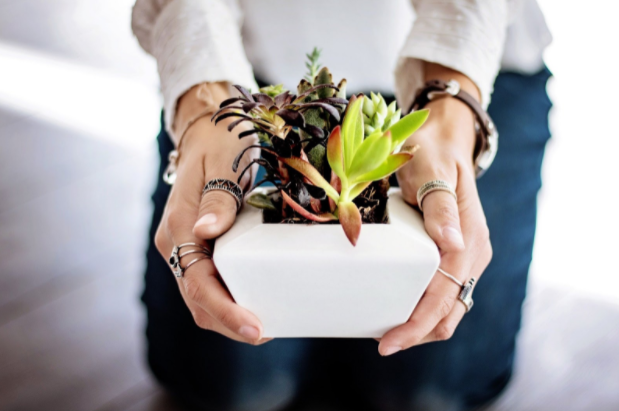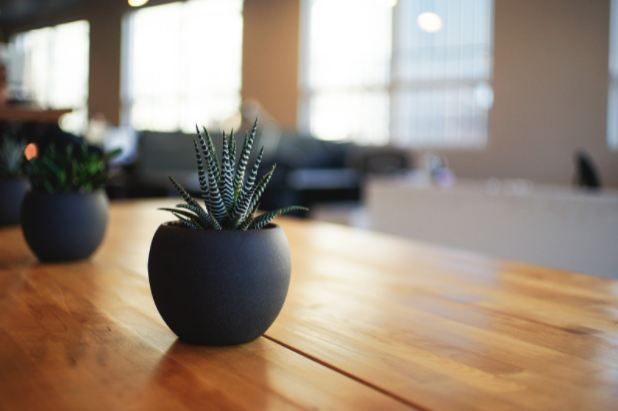Everyone loves plants, but not everyone has access to a garden, so indoor plants are an excellent compromise that can freshen the air and add color and texture to any room in the house!

Photos from: Pixabay
A popular choice for indoor plants are succulents because they look cute and easily fit on small shelves and window sills. Although succulents look great in your home, they can be a little tricky to maintain. For those of you who are thinking of adding some succulents to your room or who are having trouble caring for existing ones, here are six useful tips to help you grow beautiful and healthy succulents.
1. Choose the right type of succulent
Some succulents do better outdoors, while others are more likely to thrive indoors. The people at Lush alley mentioned that choosing succulent varieties that prefer less sun is essential if you want your plants to live long. If you have a shelf or window sill that gets plenty of direct sunlight, you can grow more colorful varieties as they usually need more sun. The best varieties of succulents to start with are those that are naturally deeper green as they require less sunlight.
2. Give them plenty of water every few days
While many plants need to be watered daily to look good, succulents are different and likely to die if watered daily. The proven Method of watering succulents consists of fully soaking their roots and soil in the pot every two to three days, and then letting the soil and roots dry completely before watering the plant again. It's also important to know that succulents go through a dormancy period during the colder months of the year, where they grow less and require much less water.
3. Provide good drainage
Succulents should be grown in containers and soil with good drainage and air circulation, as moist soil can damage and rot the roots. Some people choose to plant succulents in glass containers, and while they look nicer, the succulents are less likely to thrive inside because most glass containers don't have drain holes. However, there are some techniques for watering succulents in non-draining containers, such as: B. to change the soil and pour less. Pots that give succulents more drainage are usually terracotta, clay, or glazed ceramic with a series of small holes in the bottom to allow the roots to dry completely after watering. The Soil choice Also affects how well a pot drains, so coarse soils are preferred for growing succulents as they encourage evaporation and airflow.

4. How to deal with bugs
Bug problems with succulents can often be avoided if you stick to a routine of healthy practices, including proper watering, using well-drained pots, and providing adequate light. Occasionally, however, beetles can become a problem being introduced to a new plant, which can lead to a larger infestation and harm the health of your succulents. Mosquitos and mealybugs are some examples of beetles that regularly feed on succulents. Mosquito infestations can usually be prevented by maintaining a well-drained soil, while mealybugs are more difficult to get rid of and require spraying the leaves with alcohol and pouring them on the soil to kill the eggs. To avoid getting your succulents quickly overrun by pests and noticing other issues like withering new leaves, it is important to regularly inspect your plants.
5. Make sure they get plenty of light
Outdoor succulents need at least six hours of direct sunlight every day to stay healthy and grow well. As a result, it can be difficult for indoor succulents to get the sunlight they need to thrive. Because of this, you should carefully consider where to place succulents in your home to ensure they get plenty of sunlight. The recommended places for succulents around the house are near windows that get plenty of sunlight throughout the day. Alternatively, you can place succulents on desks, shelves, and window sills in the brightest rooms of your home.
6. Use fertilizer
Like other plants, succulents can benefit from the nutrient boost provided by fertilization, although they are easy-care plants that are used to desert climates. If the quality of the soil doesn't look too healthy, it is recommended to use fertilizer once or twice a year by diluting water-soluble fertilizer and then watering the plants on the usual schedule.
Growing succulents indoors can be challenging as their natural climate is an arid and sunny desert. However, there are a few steps and routines that you can follow to keep your succulents looking amazing.




